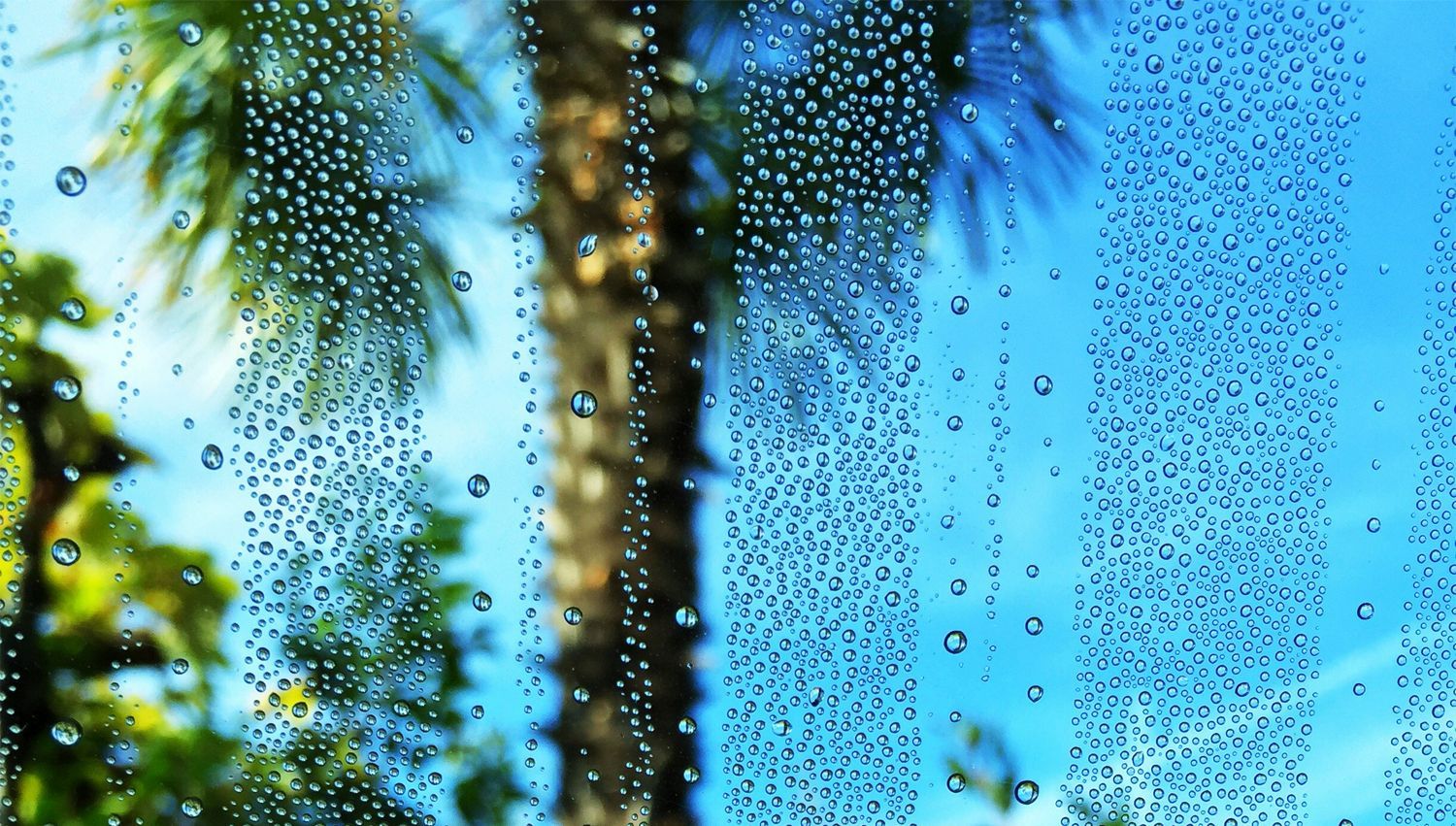Why are my windows sweating?
In the last 25 or 30 years we have seen a shift in the way residences are being built and the way occupants operate their homes. Homes are being built much tighter than they were back then. And, when I say operate, I am referring to opening and closing of windows. Years ago, home owners would open their windows as soon as the outdoor conditions were comfortable enough to allow it. Buildings were built very leaky as opposed to today and indoor generated humidity could easily leave the building through building leaks or open windows. Today we see just the opposite; buildings are built much tighter and many people like to keep their windows closed and operate their cooling and heating systems throughout all the seasons of the year.

The Cooling System and Dehumidification
The air conditioner (when in the cooling mode) does remove water vapor (humidity) from the building. However, in order for the air conditioner to dehumidify the building, it must have long run times; cycle times longer than 15 minutes. The cooling portion of the air conditioning system is sized to handle the cooling load during peak summer outdoor temperatures, in our FL climate that is about 92°F. This would indicate that a cooling system sized for summer conditions will be grossly oversized for winter outdoor conditions. During those periods, the cooling system will not get enough runtime to remove the indoor generated moisture. A cooling system must run at least 10 minutes before it will start removing moisture (water vapor or latent heat). If the cooling unit only runs 5 minutes and satisfies the thermostat, no dehumidification (moisture removal) will take place. For these special situations where the occupants never open windows, dedicated dehumidification may be the only answer.
Indoor Generated Humidity
Where does all the moisture come from? The by-product of almost everything we do in the home results in moisture generation. Our bodies will put out 4.5 pints of water (in vapor form) in a 24-hour period. Water vapor is released into the air every time we cook, take showers, or wash clothes. A household of two can generate as much as 9 gallons of water a day. Where does all this water go if the cooling system cannot remove it? The water vapor will condense on cool surfaces.
Indoor conditions during the winter months inside a home can easily be 72°F @ 55°relative humidity; this would be considered as being very good. These conditions will equal an indoor dew of 54°F. (Dew point is that temperature when water vapor changes to water liquid; condensation.) A 54° dew point is usually not a problem, unless the outdoor temperature drops below 54°F. When it does, condensation starts to form on window frames and glass inside the building. The only way to prevent this from happening is to keep the indoor dew point below the outdoor temperature. This is accomplished either by dedicated dehumidification, or, by opening windows and letting the moisture move to the cooler, dryer outdoors. Water vapor always wants to move to colder, dryer temperatures; cold surfaces become a moisture magnate.
Dedicated Dehumidification
As mentioned, in the scenario where the occupant or home owner has decided to keep the residence closed up during the winter months, the cooling system will never be capable of handling the indoor generated moisture load. These are times when a dedicated dehumidifier can prevent wintertime condensation problems. The dehumidifier can be set to conditions where condensation on window frames and other cool surfaces can be prevented.
Dehumidifiers come in either standalone or ducted. A standalone dehumidifier comes with a bucket that will have to be emptied, or, the bucket can be removed and a drain line can be attached. A ducted dehumidifier has return and supply duct outlets and is typically integrated with the central cooling and heating system. In either case, they work very well.
Conclusion
Winter time condensation is caused from a buildup in internal moisture gain. Internal generated moisture gains are from normal daily living in the residence. The cooling system will always be too large to remove moisture during the winter months. If windows will not be or cannot be opened during the winter months, a dedicated dehumidifier is typically the only answer.
Book a Service Today
We will get back to you as soon as possible
Please try again later
Location
121 Triple Diamond Blvd, Unit #16
North Venice, FL 34275
All Rights Reserved | Calcs-Plus | Terms & Conditions

